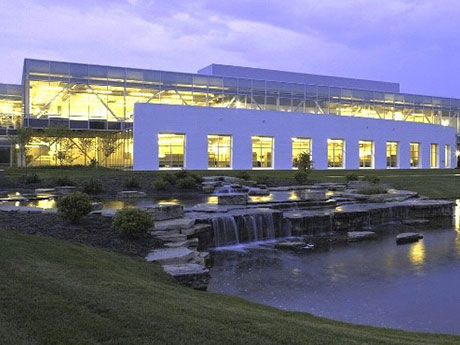By Aaron Duncan, CBRE
Describing Central Ohio’s current office market conditions is like a kid making the “little bit of everything” drink at the self-serve soda fountain: a lot of ingredients go in and the result is, surprisingly, okay. The office market is filled with polarizing headlines — from the growth and success of suburban Class A+ product versus newly vacated assets, to sublease space swarming the stat line, and everything in between.
Moreover, the sector continues to provide pools of negative and positive market conditions. One’s perspective on the market largely depends on which way they’re standing in that month but overall, much like that childhood concoction, it’s okay.
The good and the bad
For nearly three years, tenants leaned on ownership groups to let them put temporary solutions in place while they fully vetted their return-to-work strategies. Today, the good news is that tenants have finally figured it out and are confident about what their current and future footprints will look like. A strong indicator of this is the volume of headquarters transactions in the market, five of which were completed by our team:

• Vertiv: 75,000-square-foot, suburban headquarters lease at 505 N. Cleveland Ave.
• Surge Staffing: 130,000-square-foot, suburban headquarters sale at 4 Easton Oval
• Ease Logistics: 150,000-square-foot, suburban headquarters sale at 6000 Perimeter Drive
• BBI Logistics: 129,972-square-foot, downtown headquarters lease at 600 W. Nationwide Blvd.
• Lane Bryant: 236,000-square-foot, suburban headquarters sale-leaseback at 8323 Walton Parkway
The other side of this is that many of these tenants’ strategies include steep downsizes to their current footprints. When compared with pre-pandemic statistics, we are seeing average deal sizes shrink by 55 percent downtown and by 32 percent in the suburbs.
In 2019 in the central business district, there were 73 deals with an average deal size of 16,227 square feet and a median deal size of 7,390 square feet. In 2022, there were 69 deals with an average deal size of 7,350 square feet and a median deal size of 4,270 square feet.
In 2019 in the suburbs, there were 157 deals with an average deal size of 11,540 square feet and a median deal size of 6,199 square feet. In 2022, there were 202 deals with an average deal size of 7,896 square feet and a median deal size of 3,709 square feet.
Renewals versus relocations
The trickle-down effect of this disruption will be interesting to track. In typical market conditions, the most difficult deal to compete with is the possibility of a renewal. We expect that to change, as renewal landlords will have to carry the unexpected burden of high tenant improvement packages, taking on newly created vacancy, economically depressed rents and, in most cases, tenants living through the construction process to right-size. All these factors should tip the scales to a higher percentage of relocations versus renewals.
Class A+, amenity-rich space has dominated absorption numbers in the last 24 months, and the lack of new deals to second-generation office assets has created a market incentive feeding frenzy. Ownership groups are more aggressive than ever to compete and attract new deals to their assets. Tenants that have been reluctant to test the waters over the last two years are now launching exploratory searches, and some of these searches are being done years ahead of current lease expirations to take advantage of aggressive market terms.
As a result, we are seeing a bump in activity in the very hungry asset class of second-generation space and predict this to remain through the balance of 2023.
The amenities arms race
However, that’s not the whole story in this asset class. In addition to heavily incentivized economics, tenants are leaning on landlords more than ever to provide convincing reasons to entice their employees to come back to the office. The amenities arms race that we witnessed in pre-pandemic markets is back and more important than ever. Tenants are demanding activated, thoughtfully designed amenities.
The days of converting formerly static vacant space to a checkbox common conference room are long gone. Tenants can tell the difference in the quality of these improvements and are willing to pay a premium for them. Light and bright tenant lounges that replicate the comforts of home while offering a space for small-group think tanks are resonating. Additionally, many employers have implemented providing lunches and snacks to their employees a couple of days a week. As a result, they are looking for assets that can provide a variety of food options, from grab-and-go markets to catered meals.
The most surprising in-demand amenity has been the impact of meaningful outdoor, Wi-Fi enabled space. Employees have grown accustomed to having several workplace options throughout the day and using the back patio in summer months. As a result, privatized entertainment-centric outdoor space will be a differentiator for ownership groups. Landlords that adopted this model early are experiencing higher proposal conversion rates than others and will stabilize a previously tumultuous asset class.
Conclusion
There are several factors influencing the current market conditions in Central Ohio office space. Back-to-work strategies, aggressive lease terms, inconsistent demand, sublease space and vacant assets is a difficult equation to underwrite. However, like that wildly diverse fountain drink, the market will probably come out better than expected.
Aaron Duncan is a first vice president with CBRE. This article originally appeared in the April 2023 issue of Heartland Real Estate Business magazine.


